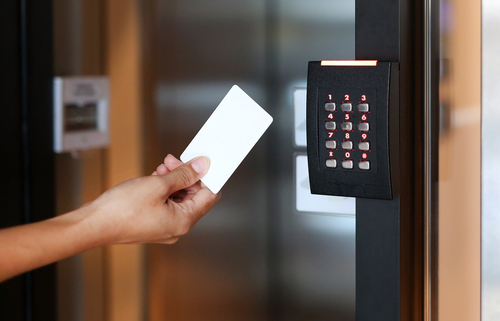Looking to install new access control products or enhance your current security system? Consider the communications technology approach that will futureproof your system’s performance and security. While some access control systems leverage legacy technology like Wiegand, the most modern, advanced systems are powered by Open Supervised Device Protocol (OSDP).

OSDP is an access control communications standard developed by the Security Industry Association (SIA) to improve interoperability among access control and security products. OSDP was developed by a diverse group of manufacturers to solve some key industry problems with legacy technology. The standard is in wide use in the United States and globally by leading manufacturers and specified by end users. OSDP was approved by the International Electrotechnical Commission (IEC) in 2020 as an international adopted standard and published as IEC 60839-11-5. The latest version of the standard, SIA OSDP v2.2, was released in December 2020, and the standard has the support of a community of experienced security experts and is continually refined to retain its usability and relevancy in the industry.
Here are some advantages of OSDP over Wiegand—and reasons to consider implementing your access control solution with OSDP:
Advanced communication and functionality: OSDP supports bidirectional communications among readers and access controllers, unlike Wiegand. OSDP’s two-way channel paves the way for advanced security applications like smart card technology, PKI/FICAM, and biometrics. Additionally, OSDP supports more device formats than Wiegand and a variety of higher baud rates. OSDP supports using protocol messages for commands such as turning an LED on and/or off, whereas I/O must be controlled by individual I/O wires in Wiegand installs. With two-way communication and file transfer capabilities, OSDP reduces the need for calls to your service provider, since configuration and firmware updates can be pushed out remotely from the panel; with Wiegand, updates require in-person technician visits.
Higher security: OSDP is more secure than legacy access control technology through the support of Secure Channel AES-128 encryption and authentication to prevent “eavesdropping.” With Wiegand, it is simple to “listen in” on reader/panel connections and extract data to open or block doors and clone credentials. OSDP leverages the high-end encryption required in federal government applications. Additionally, thanks to OSDP’s two-way communication, OSDP constantly monitors wiring and its wires “supervise” one another to protect against attack threats, meaning a panel is alerted if a reader is tampered with, malfunctions, or loses power. With a legacy system, there is no way to determine a reader issue until a badge holder attempts to badge in.
More interoperability: Using OSDP enables communication among different manufacturers’ devices and solutions. Unlike Wiegand, OSDP supports using biometric readers, meets the federal access control requirements for PKI/FICAM, can be used to transmit information gathered by other types of sensors, and allows end users the ability to use any OSDP access control unit with any other OSDP peripheral reader.
Flexible installation setup: OSDP’s use of two communication wires, instead of the typical seven or more with Wiegand, lowers the infrastructure costs. With OSDP, users also have the option of multidrop installation, meaning multiple readers can be daisy-chained to a single controller. Wiegand requires home-run installation, with wire run from each reader to the panel. Additionally, readers and peripheral devices can be installed up to 4,000 feet from the panel with OSDP, compared to a maximum of 500 feet with Wiegand.
Improved interactivity: With OSDP, dynamic and interactive user feedback mechanisms provide a rich, user-centric access control environment. Functions include multicolored LEDs, audio feedback, and ability to display welcome messages and text prompts.
Learn more about OSDP and access information about purchasing the standard, getting the training you need to implement OSDP successfully, and how you can validate device conformance to OSDP on SIA’s website here.
Edison Shen is Director of Standards and Technology at the Security Industry Association.
